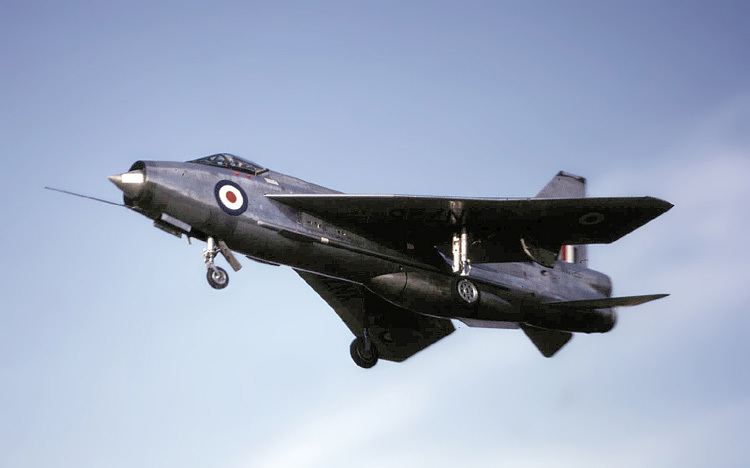 | ||
The second generation jet fighters are jet fighter aircraft that existed between the mid-1950s to the early 1960s.
Contents
Development
The development of second-generation fighters was shaped by technological breakthroughs, lessons learned from the aerial battles of the Korean War, and a focus on conducting operations in a nuclear warfare environment. Technological advances in aerodynamics, propulsion and aerospace building materials (primarily aluminum alloys) permitted designers to experiment with aeronautical innovations, such as swept wings, delta wings, and area-ruled fuselages. Widespread use of after-burning turbojet engines made these the first production aircraft to break the sound barrier, and the ability to sustain supersonic speeds in level flight became a common capability amongst fighters of this generation.
Electronics
Fighter designs also took advantage of new electronics technologies that made effective radars small enough to be carried aboard smaller aircraft. Onboard radars permitted detection of enemy aircraft beyond visual range, thereby improving the handoff of targets by longer-ranged ground-based warning and tracking radars. Similarly, advances in guided missile development allowed air-to-air missiles to begin supplementing the gun as the primary offensive weapon for the first time in fighter history. During this period, passive Infrared homing became commonplace, but early IR missile sensors had poor sensitivity and a very narrow field of view (typically no more than 30°), which limited their effective use to only close-range, tail-chase engagements. Radar-guided (RF) missiles were introduced as well, but early examples proved unreliable. These semi-active radar homing (SARH) missiles could track and intercept an enemy aircraft "painted" by the launching aircraft's onboard radar. Medium- and long-range RF air-to-air missiles promised to open up a new dimension of "beyond-visual-range" (BVR) combat, and much effort was placed in further development of this technology.
Weapons
The prospect of a potential third world war featuring large mechanized armies and nuclear weapon strikes led to a degree of specialization along two design approaches: interceptors (like the English Electric Lightning and Sukhoi Su-9) and fighter-bombers (such as the Republic F-105 Thunderchief and the Sukhoi Su-7). Dogfighting, per se, was deemphasized in both cases. The interceptor was an outgrowth of the vision that guided missiles would completely replace guns and combat would take place at beyond visual ranges. As a result, interceptors were designed with a large missile payload and a powerful radar, sacrificing agility in favour of high speed, altitude ceiling and rate of climb. With a primary air defence role, emphasis was placed on the ability to intercept strategic bombers flying at high altitudes. Specialized point-defence interceptors often had limited range and little, if any, ground-attack capabilities. Fighter-bombers could swing between air superiority and ground-attack roles, and were often designed for a high-speed, low-altitude dash to deliver their ordnance. Television- and IR-guided air-to-surface missiles were introduced to augment traditional gravity bombs, and some were also equipped to deliver a nuclear bomb.
Active and Formerly Active
Note: Thrust Dry/Afterburner (in some cases only data for one of the two might be available)
This generational era also saw the introduction of carrier based VTOL aircraft such as:
